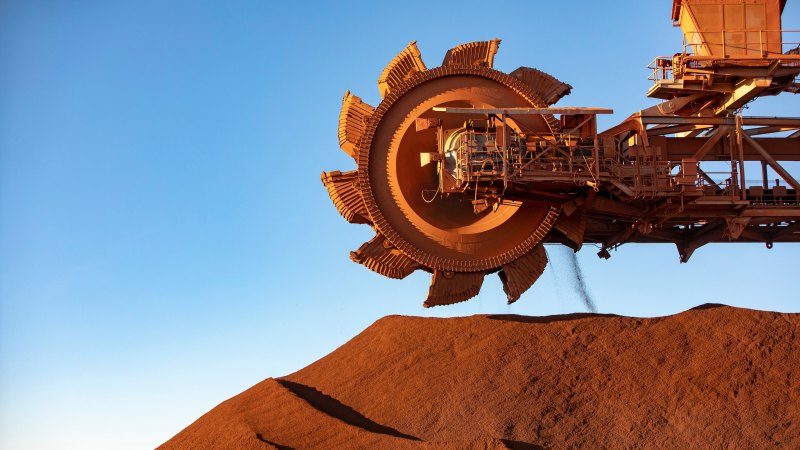
The ongoing standoff between BHP and China’s Mineral Resources Group over iron ore has raised concerns about the potential impact on Australia’s federal budget. Despite these worries, Treasurer Jim Chalmers is not yet compelled to revise budget projections. The resource sector remains a crucial contributor to the national economy, with tax receipts from this industry playing a significant role in the budget’s stability.
In the 2023-24 financial year, the resource sector accounted for $48.5 billion of the $95.7 billion in company tax collected from large businesses. Notably, BHP contributed over $8 billion to this total. While the current situation has generated some anxiety, it is not perceived as an immediate threat to budgetary health. BHP’s share price dipped slightly this week, yet it remains higher than at the beginning of the year and is nearly 22 percent above its mid-April lows after a previous slump following tariff announcements by former US President Donald Trump.
Furthermore, the share prices of other major iron ore producers, such as Rio Tinto and Fortescue, have also increased recently. More importantly, the price of iron ore itself has remained stable at approximately $US104 (around $157) per tonne, which is reassuring for budget forecasts. Given that budgets are influenced heavily by key economic indicators, the stability of iron ore prices is critical.
Historically, fluctuations in commodity prices have had significant repercussions for government budgets in Australia. Former treasurers, including Wayne Swan and Joe Hockey, faced challenges when prices swung unexpectedly. Conversely, former Prime Minister John Howard benefited from rising iron ore prices starting in 2002-03, which boosted budget surpluses.
In response to past volatility, Chalmers’ Treasury has adopted a cautious stance regarding future pricing assumptions. Following a significant surge in commodity prices in late 2016, Treasury recommended a more conservative approach, which involved projecting a return to long-term average prices rather than maintaining inflated expectations. This prudent strategy proved beneficial as it helped avoid potential budget shortfalls.
The forecast for iron ore prices has been adjusted over the years. Initially, it was expected to fall to around $US55 per tonne, but it never reached that level. By mid-2021, iron ore prices peaked at an extraordinary $US220 per tonne before dropping to $US90 by November of the same year. As of the current financial year, the lowest recorded price was $US93 per tonne, significantly above the budget assumption.
While commodity prices are essential to the budget, the backbone of fiscal health lies with Australian workers. Recent figures indicate that individuals paid a record $51.3 billion in personal income tax during July and August, exceeding forecasts by $2.4 billion. This amount constituted 62 percent of total income tax collections for those months. Conversely, companies contributed $23.2 billion, which was below expectations by $1.4 billion.
A significant decline in iron ore prices would undoubtedly impact the federal budget, particularly affecting the finances of Western Australia. However, such a decline would likely coincide with falling prices for other commodities, suggesting broader economic challenges. Thus, a downturn would signal potential financial instability in China, which remains a critical concern for the Australian economy.
The Reserve Bank of Australia has recently highlighted the increasing risks to the global financial system, specifically noting vulnerabilities in China’s financial and property sectors. Such distress could lead to a “sharp slowing in global economic activity,” resulting in lower commodity prices and diminished demand for Australian exports. For Chalmers, Prime Minister Anthony Albanese, and the government, these developments are a cause for concern.
As the situation evolves, the implications of the BHP-China standoff will continue to unfold, affecting not just the resource sector but the broader Australian economy and its fiscal outlook.







